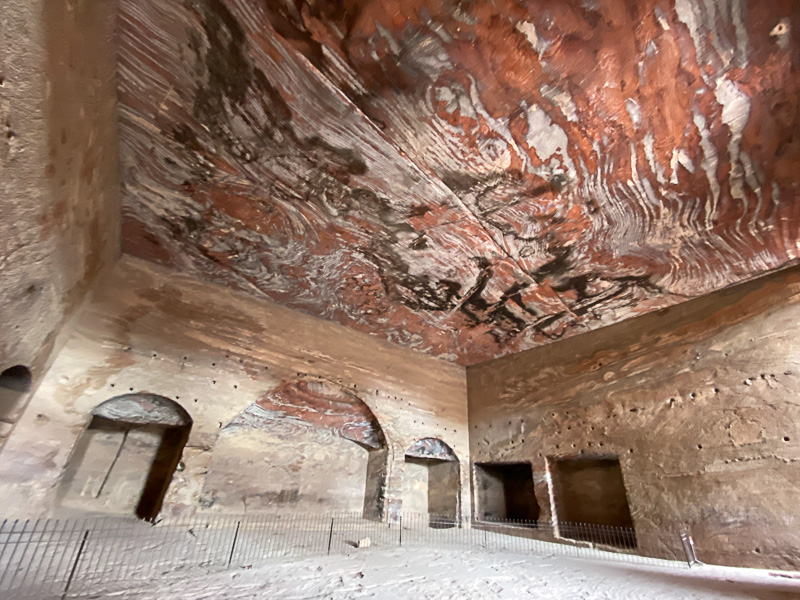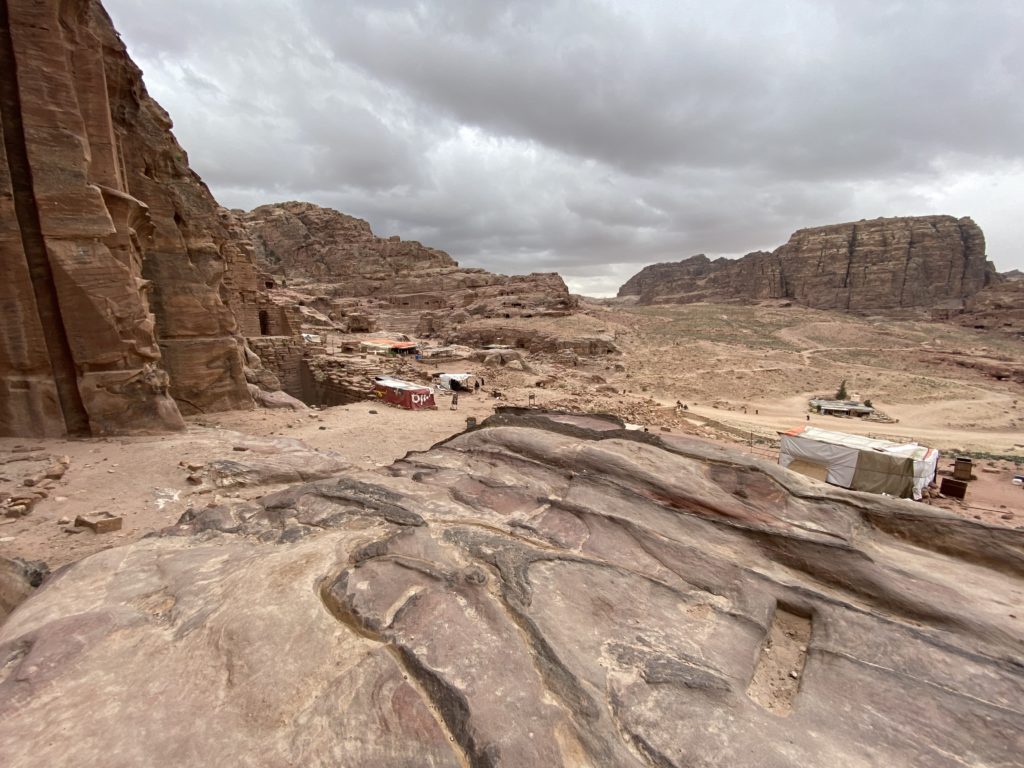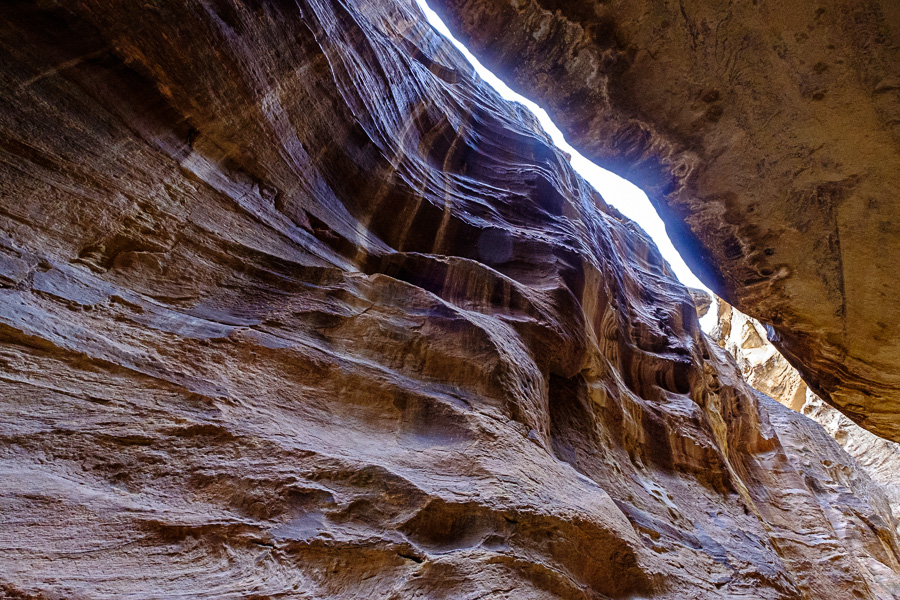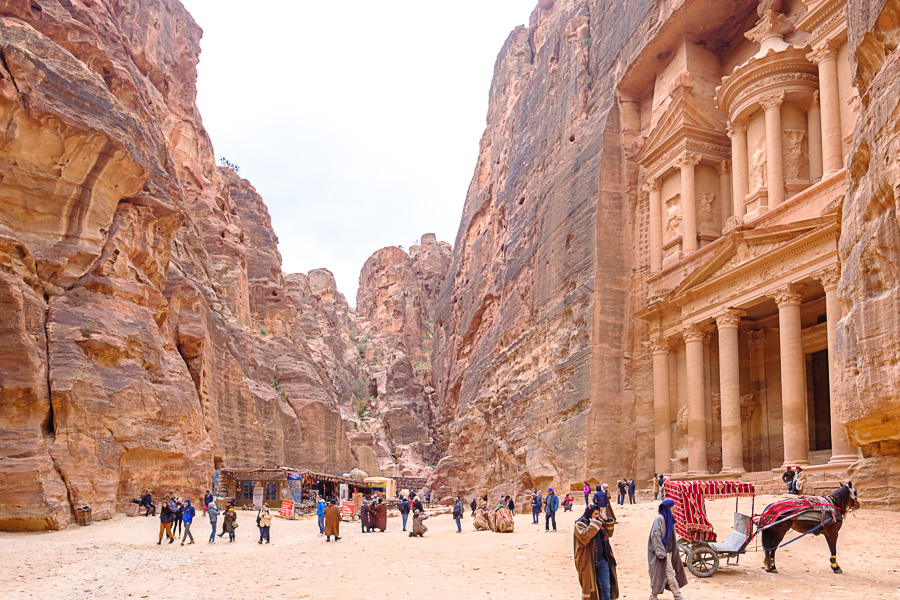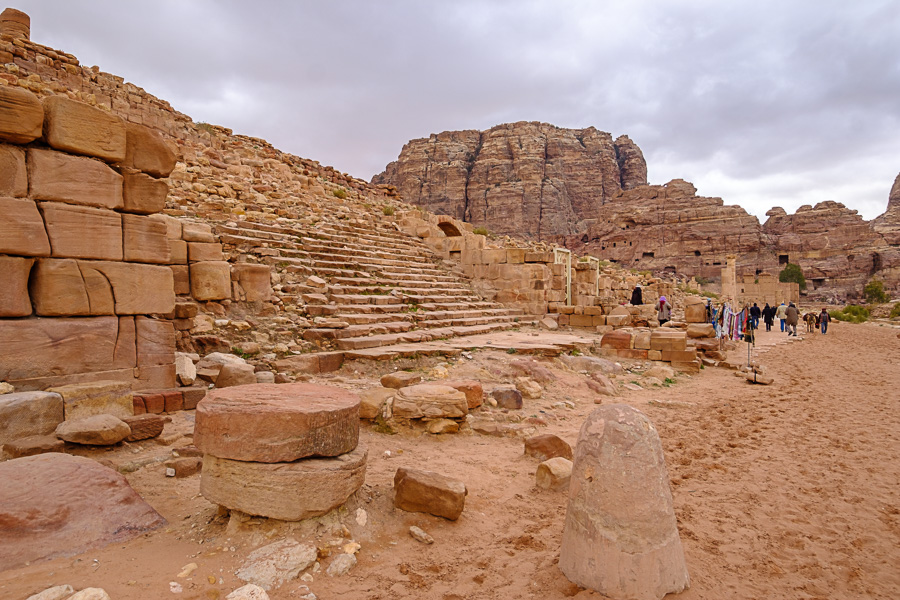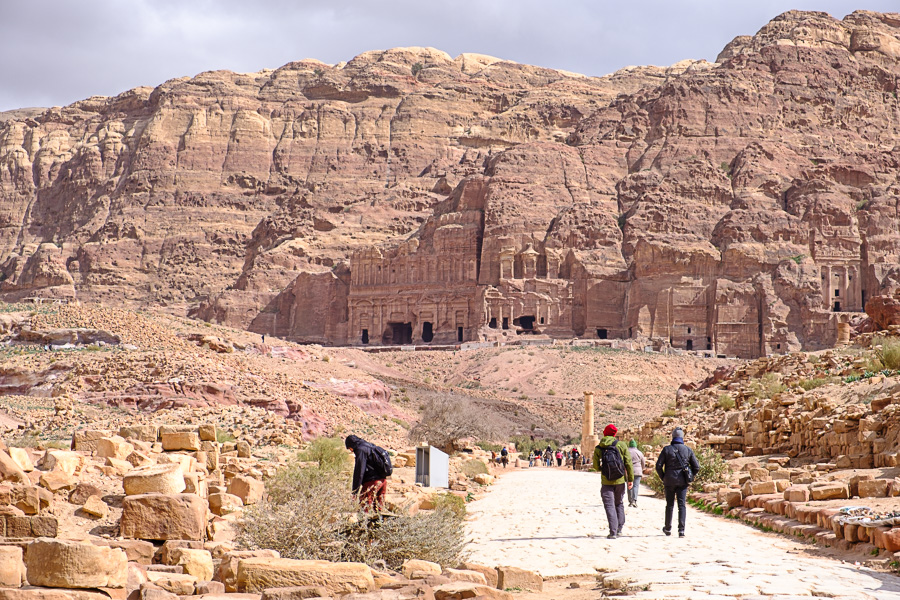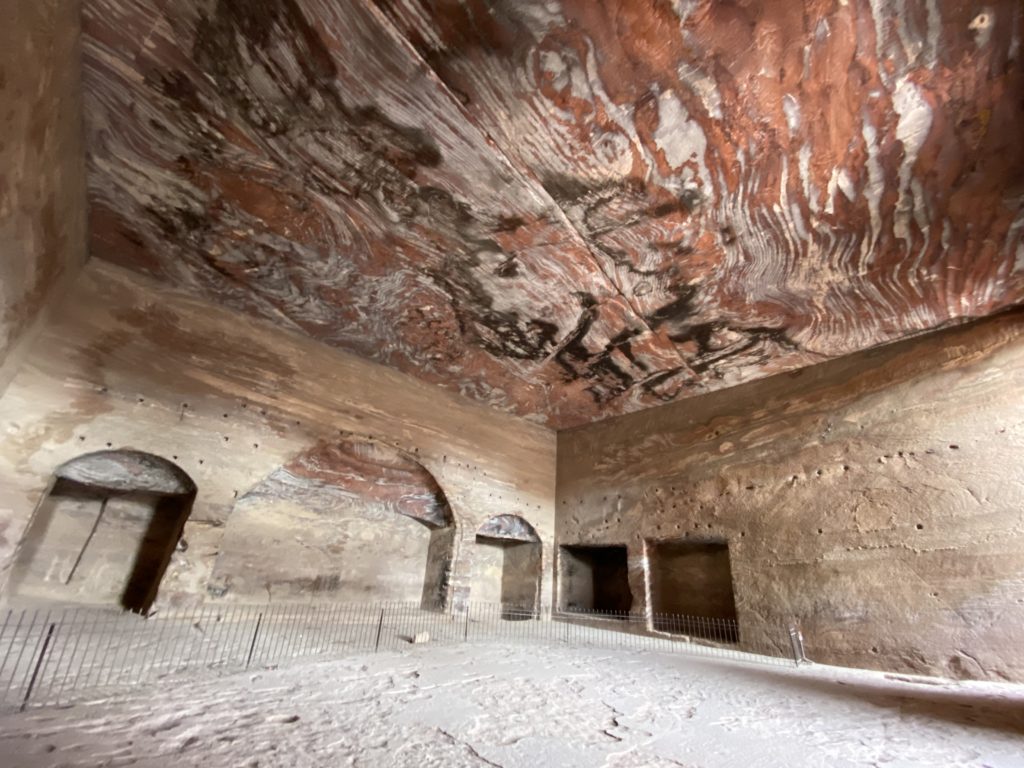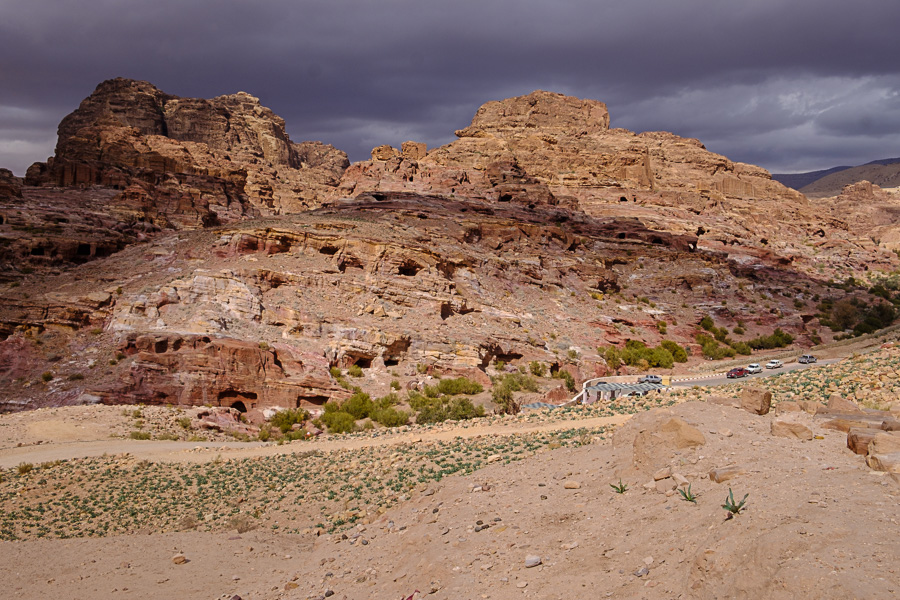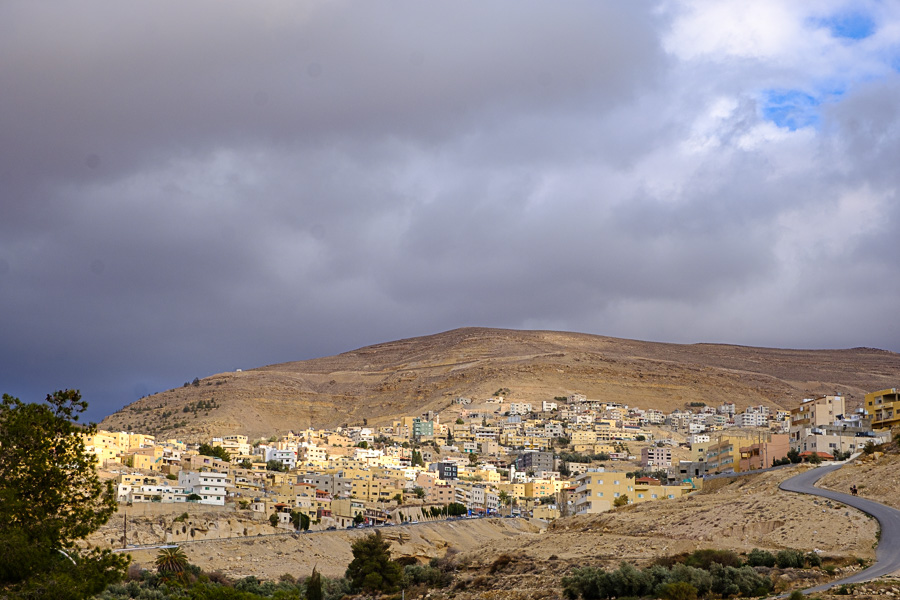Today I took 641 pictures, a high so far for this trip, walked 9 miles and took over 20,000 steps. Judy wasn’t far behind. Every step was worth it: Petra is an incredibly interesting place and I’ll let the pictures do the talking. But an apology first: with that many pictures and so little time to choose, I’ve had to do just a quick selection. Someday Real Soon Now I’m going to do a better job of editing and describing what’s there. But not tonight so you’ll have to put up with the mess I’ve put together.
Basic facts about Petra:
- The Nabataeans, a nomadic tribe of Arabs wandering around what is today Jordan and other adjacent areas, settled in Petra in the second century BCE. Being traders themselves, the recognized the strategic importance of Petra on the trade routes linking the East with the Mediterranean and northern Africa. Spices, including frankincense, incense and other luxury goods the high demand goods. The Nabataeans got stinkin’ rich.
- The Nabataeans developed the technology of water management and control, building complex water networks throughout their mountainous home.
- They also became quite skilled in large scale stone carving. They carved both homes and burial chambers into the sides of the sandstone cliffs.
- Being good traders, they established relationships with first Greece and later in the first century AD with Rome. Both cultures were trading partners and provided artistic inspiration to the Nabataeans. Many of the carvings they did drew directly from Grecian and Roman ideas: the columns, pillars and capitols that adorn Petra. They even adopted Grecian and Roman gods and goddesses.
- Things went downhill when Rome officially annexed Petra in 106 AD, folding it into their Arabian holdings, and making Petra the region’s capitol. The Romans tried to modify Petra’s architecture, adding arches, enlarging the stadium, installing lead pipes to replace the Nabataean’s perfectly good earthenware pipes – typical things Romans do when they conquer a country.
- Traders discovered about this time that transporting goods down the Red Sea was a cheaper-better-faster way than camel caravans across the desert. Camels get ornery and Nabataeans want their cut in the action.
- A major earthquake struck in 363 AD, pretty much ending Petra as a major city. Oh sure, the Crusaders built an outpost here and the Byzantines built the odd church but soon only Bedouins occupied the former burial chambers as homes. Incidentally, descendants of the Bedouins occupy themselves these days serving the tourist trade: buggy, camel, horse and donkey rides, trinket sales and food service.
Ok, that’s enough. You get the idea. At least there weren’t any statues of Ramses II we had to contend with.
We hiked in with Osama who gave us the blow-by-blow. He’s a university graduate with a degree in anthropology and knows his stuff. Doug, Haul and I hike out by ourselves, climbing to one feature after another. It was cold and windy all day – temps in the 40s. But we layered up and did OK. The outlook for the rest of our visit is about the same. Hopefully it’ll stay dry.
Tomorrow we’re off to tour Amman.


